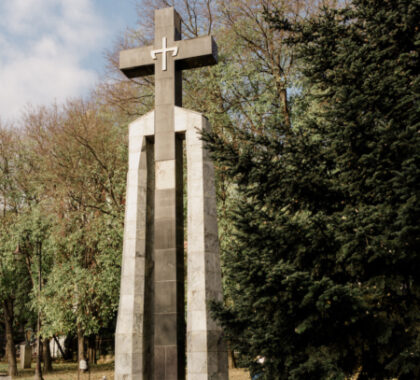By Ilkin Aliyev Summary: This article will examine the simulation of coexistence between conflict-affected communities, focusing on a simulation game designed for youth in the Nagorno-Karabakh region between Armenia and Azerbaijan. The game was created by young simulation game designers with training and mentorship provided by CRISP – Crisis Simulation for Peace e.V. Simulation gaming presents a […]
By Adriana Cârnu Summary: This article brings the reader a harvested basket of reflections coming from speakers and participants at an online gathering around the topic of “belonging.” The second annual Peacebuilder Exchange: Belonging Festival was organized by Bosch Alumni Network’s Peace Cluster and iac Berlin in November 2022. The importance of belonging has been rekindled by[…]
By Anesa Colakovic Summary: This article is about the process of establishing a peacebuilding library, known as the Educational and Cultural Learning Center, in the divided city of Mitrovica in Kosovo. I discuss how we developed and implemented the peacebuilding library model, which received support from Dr. David Philips, Director of Human Rights and Peacebuilding at Columbia[…]
An Inclusive Peacebuilding Approach in the Teso Sub-region of Uganda By Florence Amoding with Karin Felzmann Summary: Imagine sitting under a huge mango tree, protected and sheltered from the harsh African sun, a soft and sandy wind bellowing the natural music of its branches. And then, a massive sound bursts with local dancefloor music, beckoning people out of[…]
By Anton Goodman Summary: Peacemaking is a stratified process with each level an essential part of the integrated whole. When the political level is detached from the societal level, the popular support needed is lost. When society is more engaged in the process than the government, there is a lack of agency. When neither society nor political[…]
By Chinedu Jesse Isagbah Summary: This article offers insight into the incorporation of the youth-centered peacebuilding approaches that emerged in Nigeria and can increasingly be found across the world. I explore how youth should be engaged in creating a better and more peaceful atmosphere, and how leaders need to incorporate their perspectives into ending conflicts. At the[…]
By Salome Japiashvili Summary: This personal article discusses the situation in Georgia and the role Russia plays in igniting the conflicts with its neighboring countries. The Russian government does all that is in its power to polarize the societies in the South Caucasus because it knows that the choice for these countries is between the West and[…]
A Pragmatic Approach to Peacebuilding Informed by International Commerce By Piotr Kędzierski Summary: Working in the field of business consulting, and especially in the area of negotiations, has taught me a great deal about how to reach relative harmony and peace between different, often opposing, parties. My experience in this sector informs my recommendations in this article[…]
This article examines how trauma and memory nourish peace education. The case study focuses on Bulgaria, based around my experiences of launching a research project through the World War 2 Peace program within the Bosch Alumni Network’s Peace Cluster. It also includes media, such as audio excerpts from an interview with a civic society activist, whose grandfather was killed in the aftermath of the World War II, as well discussions with a young artist, who describes her experience of working with historical events in her artwork.
By Suzanne Ondrus Summary: This reflective creative piece of nonfiction and poems contemplates how I strive for peace in my life and how it feels without peace in my life. Why do I frequently ignore taking action to come to stillness—to peace? I present my mental blocks that prevent me from pursuing it. Learn the steps I[…]










